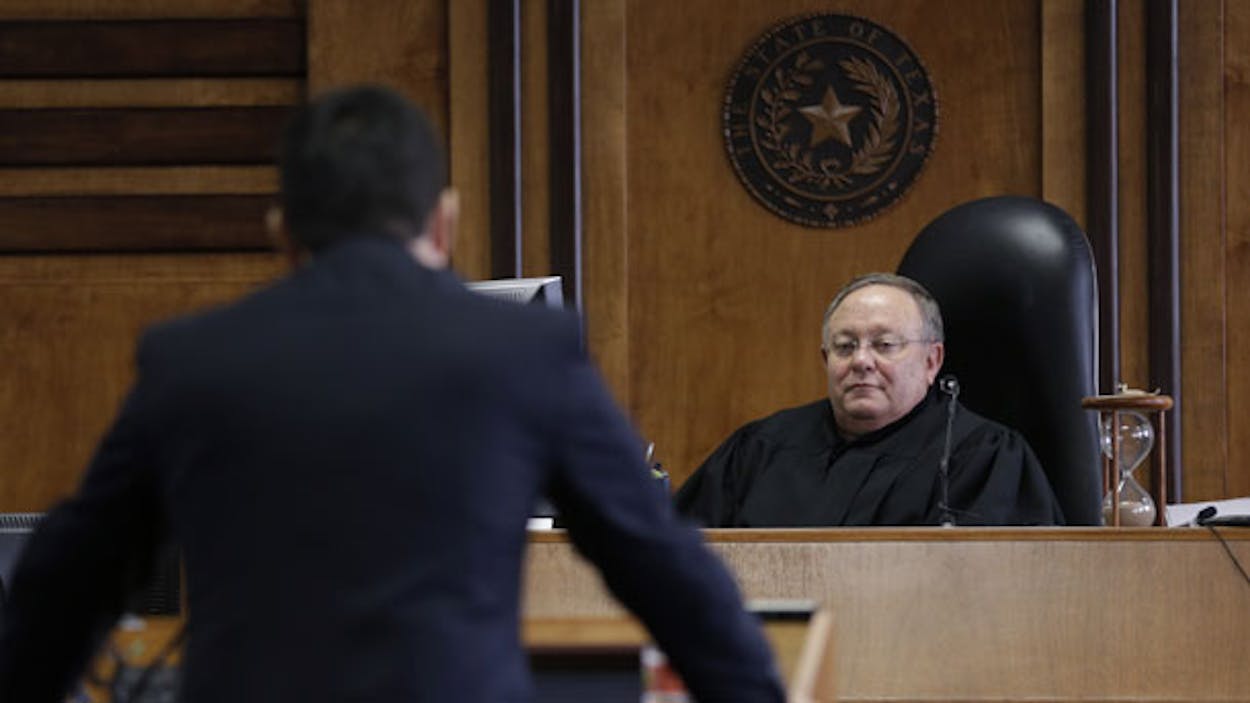 State District Judge John Dietz listens as attorney David Hinojosa makes his closing arguments in a consolidated six-lawsuit case contending the school finance system violates the Texas Constitution on February 4 in Austin. (AP Photo | Eric Gay)
State District Judge John Dietz listens as attorney David Hinojosa makes his closing arguments in a consolidated six-lawsuit case contending the school finance system violates the Texas Constitution on February 4 in Austin. (AP Photo | Eric Gay)
One of the critical issues facing the 83rd Legislature has been the funding of the public schools, a debate that has raged long and loud after the deep cuts that were made by the 82nd Legislature. Compounding the issue has been the school finance lawsuit; in early February Judge John Dietz ruled that the current system was unconstitutional.
However, the restoration of some of those cuts this session could be a game changer for the lawsuit, and it is a development that Dietz will have to take into account when he writes his opinion, which he has yet to do. In fact, many of the plaintiffs believe that Dietz may summon the parties to his courtroom when the session is over. No doubt the Texas Supreme Court has also taken notice of the dollars that have been restored. For example, in the House, here’s a snapshot of where things stand:
$500 million for the current biennium in a supplemental appropriations bill
$2 billion for enrollment growth in the next biennium
$2.5 billion in addition to that for the next biennium (not counting $150 million to raise the state’s TRS contribution)
It is possible that the Court could rule that the restoration of funds are sufficient to get the state off the hook, case dismissed, back to square one.
I think that’s unlikey, however: the fundamental problem that the schools have to face is the high percentage of students (60 percent, at last count) who come from impoverished backgrounds. This is the structural problem that plagues the schools.
Another structural problem with the system is the “weights” — that is, an aspect of the funding formulas that seeks to compensate for the disadvantages of poverty. For example, an impoverished school might benefit from a weight for the number of students who need compensatory education, special ed, or bilingual ed. Legislators from suburban and rural districts have always been suspicious of the weights and view them as a way of getting more funding for urban districts, which they are meant to be. (The ninth grade STAAR test in 2012 was a disaster; 47% of low income students failed to pass in three tries. Among students who were not from low-income backgrounds, 85% to 90% passed all five tests.) It may be that money is flowing back to the schools, but that doesn’t ensure adequacy in the system.








